#greek holidays
Text
Dekapentaugoustos might be over but the Vibes are not!
Happy nameday to all the people who celebrate!
46 notes
·
View notes
Text
☀️Deities☀️
I see so many people criticizing others over their relationships, or lack thereof, with their deities, so here are some reminders:
Not having deities is okay.
Having just a devotional relationship with your deities is okay.
Having a working relationship with your deities is okay.
Playing games with your deities is okay.
Harmless jokes with your deities are okay.
Doing fun things with your deities is okay.
Doing devotional offerings for your deities is okay.
Giving physical offerings to your deities is okay.
Not being able to do certain offerings for deities is okay.
Having an altar for your deities is okay, no matter the size.
Not having an altar for your deities is okay.
Laughing with your deities is okay.
Crying with your deities is okay.
Having genuine conversations with your deities is okay.
Being unable to hear/see deities is okay.
Being able to hear/see deities is okay.
Not being able to communicate through divination is okay.
Using divination as a key element in communication is okay.
Not calling on deities during spellwork is okay.
Asking deities to help during spellwork is okay.
Asking deities for help in general is okay.
This is your relationship with your deities in your practice. Don't let anyone tell you what you can and can't do. 🫶
It's 2am, please forgive me if there are any mistakes!
#hellenic pagan#paganism#eclectic pagan#pagan#pagan witch#gay pagan#pagan blog#pagan community#divination#deity work#norse deities#greek deities#loki deity#hellenic deities#deity worship#apollo deity#deity witchcraft#gods and deities#deities#deity#greek paganism#pagan holidays#norse pagan#pagan altar#paganlife#pagans of tumblr#paganblr#eclectic witch#tarot witch#baby witch
902 notes
·
View notes
Text
Jay has the potential to do the funniest thing ever and announce the release of the Underworld Saga on Easter
#epic the musical#epic the circe saga#epic the underworld saga#I know we’re being fed but it would be hilarious#no more holidays just epic#the Iliad#the oddyssey#odysseus#but super buzzing for circe saga#not hurrying but seriously#jorge rivera herrans#greek mythology
803 notes
·
View notes
Text

Ariadne & Dionysus
🌿 twitter | print available 🌿
#greek gods#greek mythology#ariadne#dionysus#cw: alcohol#medusa's peach#sketch#illustration#hope the holidays have been treating you well
6K notes
·
View notes
Text









Love and Deepspace
#love and deepspace#恋与深空#love and deep space#shen xinghui#xavier#沈星回#黎深#li shen#zayne#rafayel#祁煜#qi yu#weibo#just realised these arent on the wallpaper app 😵🥴 ????? but its on weibo#theres even a give away holiday to the maldives/greek islands/fiji/new zealand on their page the pr team is really going for it lol
503 notes
·
View notes
Text
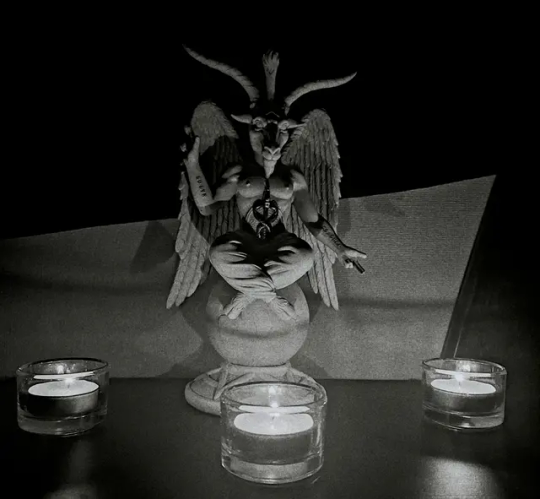
Ave Satanas, Lucifer!
#as the World celebrates an ursurped pagan holiday let's celebrate the one who brought the light to our eyes#satan#satanism#satanic#hail satan#altar#witch#aesthetic#baphomet#candles#easter sunday#black and white#photography#witch aesthetic#satanic aesthetic#demonic#demonic aesthetic#demon aesthetic#dark#dark aesthetic#i don't know i just had this idea#we celebrated the pagan side (well to me) eggs cognac and all but i didn't take pictures this year#i ever scraped 666 in greek on an egg 🤣
178 notes
·
View notes
Text
Greece 🇬🇷🇬🇷🇬🇷🇬🇷
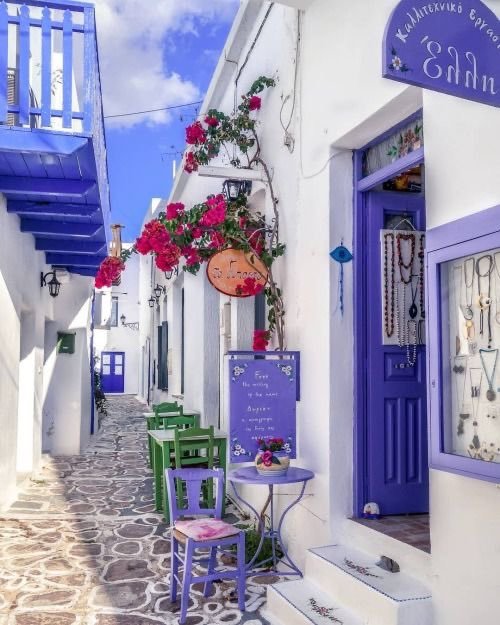
180 notes
·
View notes
Text
Every Pagan Holiday
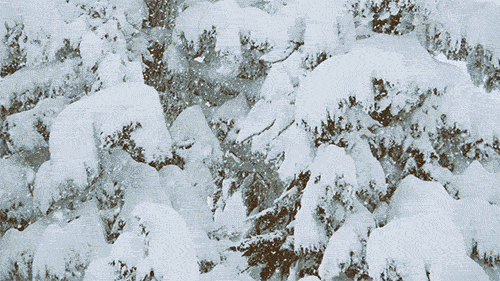
JANUARY
KALENDS
1st January
Origins: Ancient Greece/Rome
Observed by: Hellenic/Roman polytheists
Honouring Janus/Juno, first day of the Year. Kalends brought us the word 'calendar'.
ÞORRABLÓT (THORRABLÓT)
End of January/beginning of February
Origins: Iceland
Observed by: Heathens, Asatru
Midwinter Festival honouring Thor, usually by feasting and poetry.

FEBRUARY
IMBOLC
2nd February
Origins: Celtic polytheism /Ireland, as St. Brigid's Day
Observed by: Most neopagans, Wiccans, Druids, Asatru (as Charming of the Plow)
Imbolc is the most widely known and observed pagan holiday in the months of January and February. It falls at the beginning of spring/end of the winter for the Celtic peoples; marking the changing of the seasons, as most holidays do. St. Brigid is a Christianised form of or inspired by the Celtic fertility goddess Brigid who is celebrated on this day.
PARENTALIA
13th-21st February
Origins: Ancient Rome
Observed by: Greco-Roman polytheists
Translating to 'Ancestors Day', Parentalia is a nine-day celebration of deceased ancestors. Historically it was observed by feasting and making offerings and sacrifices to the dead and spirits of the underworld.
VÁLI'S BLOT
14th February
Origins: Old Norse
Observed by: Heathens, Asatru, Norse polytheists
Váli's Blot is considered by some Asatru to be the Norse equivalent of Valentine's Day but is widely acknowledged as a season changing festival. A day for marriage and celebrating with family and friends, and for remembrance of Váli, the son of Odin who defeated Höðr on this day.
LUPERCALIA
15th February
Origins: Ancient Rome
Observed by: Greco-Roman polytheists
Festival thought to honour a wolf who raised abandoned princes, celebrated originally by sacrificing goats to the gods, feasting, and, for fertility, nudity and fornication.
LESSER ELEUSINIAN MYSTERIES
17th-23rd February
Origins: Ancient Greece
Observed by: Hellenic polytheists
Initiation to the cult of Persephone and Demeter by sacrificing a pig. Prelude to Greater Mysteries, initiations held on these dates. Once completed, initiates could then move onto Greater Mysteries in the autumn.
ANTHESTERIA
27th February - 1st March 2021
Origins: Ancient Greece
Observed by: Hellenic polytheists
Athenian festivals dedicated to Dionysus and the dead. Held around the full moon in the month of Anthesterion, which in the Gregorian calendar this year roughly translates to 27th February.
THE DISTING/DÍSABLÓT
End of February/beginning of March
Origins: Uppsala, Sweden
Observed by: Heathens, Asatru, Norse polytheists
Celebration of Valkyries and other female spirits, called dísir. Sacrifices were made for a good harvest. Celebrated still by an annual market in Sweden.

MARCH
KALENDS
1st March
Origins: Ancient Greece/Rome
Observed by: Hellenic/Roman polytheists
Honouring the god Mars/Ares. Kalends brought us the word 'calendar'.
OSTARA/EARRACH
20th March
Origins: Anglo Saxon paganism, popularised as Ostara by Wicca
Observed by: Anglo Saxon Pagans, Wiccans, Neopagans, Druids (as Alba Eilir), Heathens (as Summer Finding), Ásatrú (as Sigrblót)
The northern hemisphere's vernal equinox, the word Ostara was introduced though Wicca and named for the goddess Eostre. Surprisingly unrelated to Easter in all but name, Ostara symbolises the beginning of spring. As a seasonal holiday it is widely celebrated by many different groups of pagans.
RAGNAR LODBROK'S DAY
28th March
Origins: Icelandic Sagas
Observed by: Ásatrú
Day of remembrance for Ragnar Lodbrok, Viking King of legend

APRIL
KALENDS/VENERALIA
1st April
Origins: Ancient Greece/Rome
Observed by: Hellenic/Roman polytheists
Celebration of the first of the month, this one honouring the goddess, Venus.
REMEMBRANCE FOR HAAKON SIGURDSSON
9th April
Origins: Norway, C9th
Observed by: Ásatrú
Day of remembrance for ruler of Norway who claimed lineage to Odin in the Icelandic Sagas.
WALPURGISNACHT
30th April
Origins: German Christianity, originally Saint Walpurga was known for banishing witches and other pests
Observed by: LaVeyan Satanists
Anton LaVey chose to celebrate this holiday as a follow up to the spring equinox and due to its past association with witchcraft.
HEXENNACHT (WITCHES' NIGHT)
30th April
Origins: German folklore, as Walpurgisnacht but witches were alleged to convene with the devil in this night
Observed by: Temple of Satan as 'a solemn holiday to honour those who were victimized by superstition'.

MAY
BEALTAINE/BELTANE
1st May
Origins: Celtic (Ireland/Scotland/Isle of Man)
Observed by: Wiccans, Neopagans, Celtic reconstructionist, Ásatrú/Heathens (as May Day)
One of the more well-known pagan festivals, Beltane is a festival of fire and the beginning of the summer. Also widely referred to as May Day, it is celebrated by lighting fires.
KALENDS
1st May
Origins: Ancient Greece/Rome
Observed by: Hellenic/Roman polytheists
Honouring the goddess Maia, for whom the month may have been named.
REMEMBRANCE FOR Guðröðr of Guðbrandsdál
9th May
Origins: C11 Norway, Icelandic Sagas
Observed by: Ásatrú, Norse, heathens
Guðröðr had his tongue removed by Óláfr for rebelling against violent conversion from Norse paganism to Christianity.

JUNE
KALENDS
1st June
Origins: Ancient Greece/Rome
Observed by: Hellenic/Roman polytheists
Anniversary of temples to Juno Moneta (protectress of money, her temple was where coins were made), Mars/Ares (God of war), and the Tempestates (goddesses of storms).
ARRHEPHORIA
3rd Skirophorion (translates to mid-June)
Origins: Ancient Greece
Observed by: Hellenic reconstructionist
Feast in celebration of Athena and fertility.
MIDSUMMER/SUMMER SOLSTICE
21st June
Origins: Agricultural holiday/longest day observed for centuries by many civilisations. Christianity can date to as early as C4th
Observed by: Wiccans/Germanic neopagans (as Litha), Asatru/Heathens, Druids (as Alban Hefin)
One of the main four holidays in the Wheel of the Year and popularised by Wiccans and neopagans as Litha which is taken from the Anglo-Saxon words for June/July, this is the longest day of the year and the middle point and sometimes considered the beginning of summer.

JULY
REMEMBRANCE FOR UNNR/AUD THE DEEP MINDED
9th July
Origins: C9th Iceland
Observed by: Ásatrú, Heathens, Norse reconstructionist
Aud was a traveller in the 9th century moving between Dublin, the Hebrides, Orkney, and finally Iceland following the deaths of her husband and son. This day is to honour her memory.
HERACLEIA
July/August
Origins: Ancient Greece
Observed by: Hellenic polytheists
Festival dedicated to Heracles the demigod and his death, involving feasting and celebration.

AUGUST
LUGHNASADH/LAMMAS
1st August
Origins: Celtic Britain (Ireland, Scotland, Isle of Man)
Observed by: Wiccans, Neopagans, Christians (as Lammas), Ásatrú (as Freyfaxi)
Named for the god Lugh, this festival is one of the Celtic harvest festivals and marks the beginning of the harvesting months. It was celebrated by climbing mountains, bull sacrifice, offerings, and feasting. Handfasting is commonplace with Wiccans in modern times.
REMEMBRANCE FOR REDBAD, KING OF THE FRISIANS
9th August
Origins: C7th Frisia (area of Germany/Netherlands)

SEPTEMBER
NOUMENIA
8th September
Origins: Ancient Greece
Observed by: Hellenic polytheists
Celebration of new Hellenic lunar month. Offerings of honey and incense made to household deities.
REMEMBRANCE FOR HERMANN THE CHERUSCAN
9th September
Origins: C9th CE
Observed by: Heathens, Ásatrú
Hermann the Cheruscan, also known as Arminius of the Cherusci tribe, led the defeat against the Romans at the Battle of Teutoburg Forest and is lauded for saving Eastern Germanic peoples from being conquered by the Roman Empire.
AUTUMN EQUINOX (NORTHERN HEMISPHERE)
22nd September
Origins: 1970s neopaganism
Observed by: Wiccans and Neopagans (as Mabon), Ásatrú (as Winter Finding)
Named Mabon by prominent Wicca and Neopagan Aidan Kelly, after the Welsh mythological figure Mabon ap Moldron, the autumn equinox is one of the harvest festivals and marks the beginning of autumn in the northern hemisphere. Mabon is a relatively new pagan holiday not based on any specific historical festival, but traditionally people around the world would celebrate some kind of harvest festival around the end of September/beginning of October.
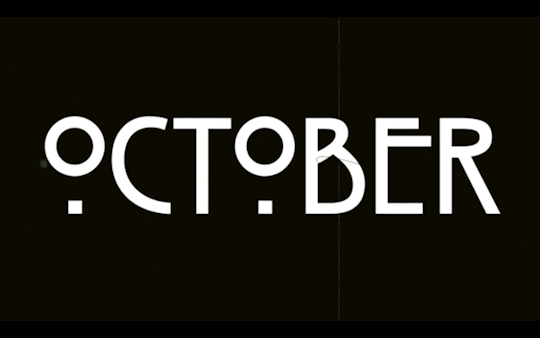
OCTOBER
PYANOPSIA
7th October
Origins: Ancient Greece
Observed by: Hellenic polytheists
Pyanopsia, or Pyanepsia, is a festival to honour Apollo, one of the most important deities, God of music, the sun, knowledge, healing, and archery - amongst other things. During the festival, two special offerings would be placed on doorways and carried to the temple. These offerings were a bean stew, and an olive branch wrapped in wool with honeys, pastries and seasonal fruits hanging from it.
REMEMBRANCE FOR LEIF EIRIKSSON
9th October
Origins: C10th CE
Observed by: Heathens, Ásatrú, Norse pagans
Remembrance for Leif and his sister Freydís Eiríksdóttir, children of Erik the Red, who are cited with being the first Norse explorers in North America.
THESMOPHORIA
12th-14th October
Origins: Ancient Greece
Observed by: Hellenic polytheists
Festival held in honour of Demeter Thesmophoros, goddess of agriculture, and her daughter Persephone, goddess of death and life, Queen of the Underworld. Celebrated primarily by women, this festival is linked with fertility, and we know very little about it due to its secretive rites. It is thought that it involved the sacrifice of pigs (although some sources say women), and abstinence.
REMEMBRANCE FOR ERIK THE RED
28th October
Origins: C9th CE
Observed by: Heathens, Ásatrú, Norse pagans
Erik the Red, probably named for the colour of his hair and beard, was the first permanent European settler in Greenland. His children were explorers too, who went to America, and although his wife converted to Christianity, Erik remained faithful to his Norse pagan gods.
SAMHAIN (HALLOWE'EN)
31st October-1st November
Origins: Gaelic - Scotland, Ireland, Isle of Man
Observed by: Celtic pagans, Neopagans, Wiccans
Pronounced SOW-in (sow rhyming with cow), Samhain was originally a harvest festival marking the beginning of winter. The day itself is the 1st November, but celebrations begin on October 31st, and this has become the accepted associated day. It's a festival of the dead, where the síthe, fae and spirits, can enter this realm from their own. Wiccans talk of a 'veil' thinning, meaning the boundary between worlds. Similar death related festivals around this time can be noted in other faiths from across the globe, and of course in the modern Hallowe'en.
WINTER NIGHTS (VETRNAETR), ÁLFABLÓT/DÍSABLÓT
31st October
Origins:
Celebrated by: Heathens, Ásatrú, Norse pagans
Winter Nights is mentioned in the Ynglinga Saga as one of the three greatest blessings of the year, the other two being Sigrblót in April, and þorrablót in late Jan/early Feb. Winter Nights is the celebration of the beginning of the winter season; Álfablót is a sacrifice to the elves, and Dísablót a sacrifice to the female spirits (dísir) and Valkyries.
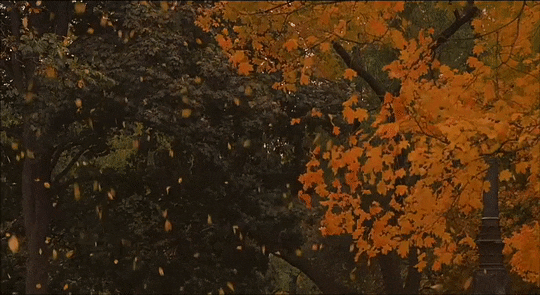
NOVEMBER
REMEMBRANCE FOR SIGRID THE HAUGHTY
9th November
Origins: C9th CE
Observed by: Heathens, Ásatrú, Norse pagans
It is not actually known whether Sigrid Storråda, or Sigrid the Haughty, was an actual historical figure, an amalgamation of a few, or simply a myth. The lore goes that she was proposed to multiple times and turned down many but went on to orchestrate conflict when a potential suitor - Olaf Tryggvason, King of Norway - attempted to convert her to Christianity.
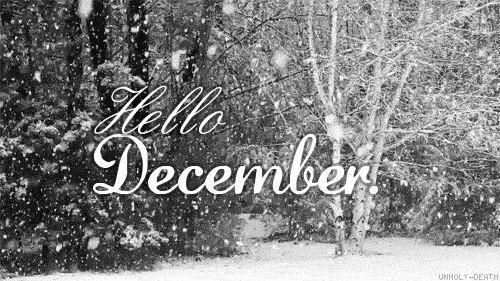
DECEMBER
REMEMBRANCE FOR EGILL SKALLAGRÍMSSON
9th December
Origins: C10th CE
Observed by: Heathens, Ásatrú, Norse pagans
Day celebrating the poet, farmer, and berserker Egill Skallagrímsson, who is recalled in The Icelandic Sagas by Snorri Sturluson. Egill is known for his many killings and escaping death by writing an epic poem after being captured when washing up on our Northumberland coastline.
SATURNALIA
17th - 23rd December
Origins: Ancient Rome
Observed by: Roman polytheists, some Hellenic
Like Yule and Lesser Dionysia, Saturnalia was the Roman winter festival celebrating the coming return of the sun and honouring the god Saturn. The standard feasting and drinking feature, and slaves would be treated as equals like Dionysia. Saturnalia is another festival cited as being picked up by Christians and used as inspiration for Christmas.
WINTER SOLSTICE (YULE/MIDWINTER)
21st December
Origins: Germanic nations, as early as C4th CE
Observed by: Norse pagans, Wiccans, Neopagans, LaVeyan Satanists, Ásatrú, Heathens, many Germanic nonpagan peoples
Yule is the midwinter festival known commonly among pagans as a time for feasting, being with loved ones, remembering ancestors, and looking forward to the return of the light and warmer days. Many pagans will celebrate Yule for more than one day, some celebrating a week either side, some for longer, up to two months, and some for twelve days afterwards. True Yule would have originally been in January for midwinter, but King Haakon the Good
moved it to coincide with the Christian celebrations in the 10th century, as told in the Ynglinga Saga.
On the 24th of December, Anglo Saxons are said to have celebrated 'Mothers Night' honouring female ancestors.
RURAL/LESSER DIONYSIA
End of December/beginning of January
Origins: Ancient Greece
Observed by: Hellenic polytheists
Smaller festival honouring the god Dionysus (Greater Dionysia took place in cities at the end of winter). Feasting, mask wearing to stop distinction between classes so that everyone could feel equal, sacrifices, parades, and phallic display were all used to celebrate.
#wheel of the year#wiccan#pagan#heathen#greek#mythology#holidays#religious holidays#pagan holidays#non-Abrahamic holidays#witch#witchcraft#witchblr#pagan wicca#polytheism#paganism#witches#witch holidays#witches holidays#pagan witch
96 notes
·
View notes
Text

Hey, friends! I hope you don't mind if I try to peddle a project I've been working on. After three years of designing, drawing, making prototypes, etc, I'm finally releasing (taking orders for) the wooden wall-hanging Santa's Workshop DisPlayset. I wanted to make something that people can hang in their homes year after year, and to be part of their holiday traditions.

The set comes with Santa, Mrs. Claus, and ten elves.


It's made of sturdy 1/4 birch, and has nine platforms on which to position the figures.

It also has a shelf below the stables on which to place the story cards that come with each figure:
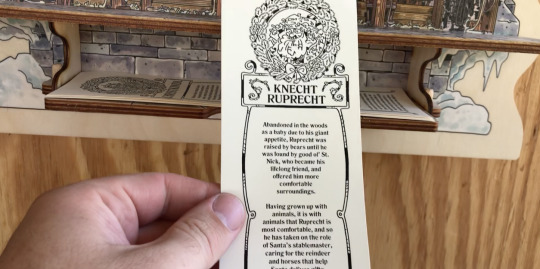
I've also got 25 additional Christmas and winter holiday figures ready to populate the workshop, available either individually or as a big collection:

Thanks for taking a look! I really appreciate it. This has been a labor of love for a while and I'm excited to put it out into the world.
I'll be taking orders for US customers (looking into international shipping, but it's very difficult and pricy to manage) until August 15, 2023 to have them mailed by October 31, 2023 so you right-after-Halloween Christmas decorators can get yours up quick.
You can order the Workshop and/or figures at SchweizerCraft.com
Thanks again!
#Christmas#Folklore#Holiday Decor#Santa#Santa Claus#Handcrafted#Mrs. Claus#Krampus#Mari Lwyd#Bellsnickel#Greek Mythology#Callisto#Ded Moroz#Saint Nicolas#Handmade Toys
379 notes
·
View notes
Text
For #NationalLobsterDay: 🦞


Terracotta vase in the form of a lobster claw
Greece, Attic, c. 460 BCE
Terracotta; red-figure
Metropolitan Museum of Art New York 23.160.57
“Because so many aspects of Greek life depended on the sea, a vase in the shape of a lobster claw is not surprising. It is, however, exceptional and may be a variant of the askos—a bag-shaped oil container provided with a vertical mouth and strap handle. The Dionysiac iconography of the lobster claw suggests that it was a novelty item used at symposia (drinking parties).”
#National Lobster Day#animals in art#animal holiday#ancient art#Greek art#lobster#terracotta#pottery#ceramics#Metropolitan Museum of Art New York
187 notes
·
View notes
Text
March 9: Genealogy day

#riordanverse daily holidays#percy jackson#pjo hoo toa#riordanverse#heroes of olympus#nico di angelo#trials of apollo#percy jackon and the olympians#Greek mythology family trees are a mess
23 notes
·
View notes
Text
Introduction
Hey everyone!! I wanted to do a quick introduction post for all of you new people.
First of all, it's AMAZING to meet all of you! I am loving the positivity I've received on this platform so far. Bless all of you for being so wonderful 💖🫶
My name is Jordan, but you may also call me Sun. I am 18 years old, and I use he/she/they pronouns. I've been practicing paganism for eight years (so since I was ten years old!), and my mom is also a witch.
I currently work with Apollo (eight years), Loki (four years), and Hades (like two days haha).
Some fun facts about me:
1. I'm starting freshman year of college in the summer, and am working towards a PhD in psychology!
2. I'm courting to be a godspouse :)
3. Outside of witchcraft, I like to bake, sing, write songs, and write books/poetry/essays!
4. I have a dog named Stitch!
5. I have over 35 tarot decks (nearly 40!)
I want to remind y'all that I am ALWAYS open to questions and DMs! I love answering things and talking to people in general. I need more friends too 🫶🫶
Here are some pictures to reflect my practice!

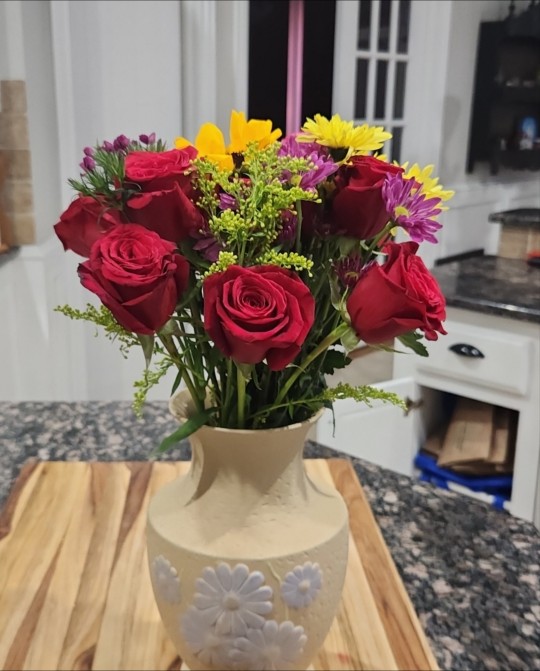



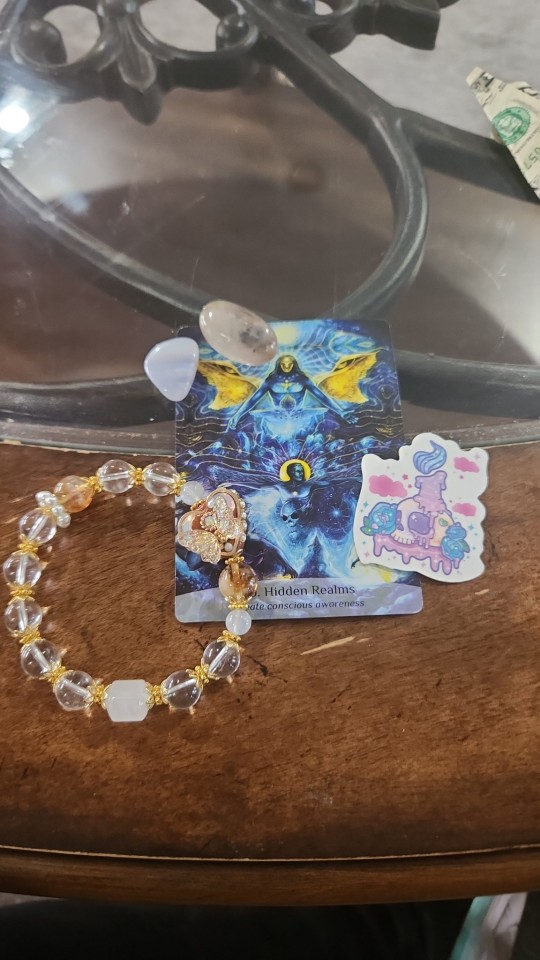
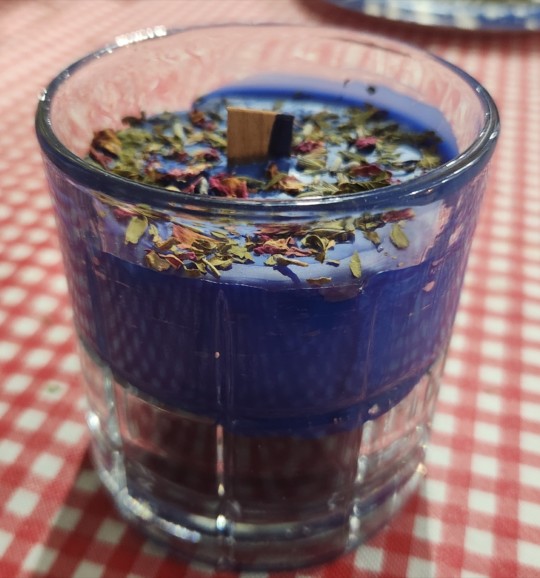



That's all! Love y'all <3 take care of yourselves!!!!
#hellenic pagan#paganism#eclectic pagan#pagan#pagan witch#gay pagan#pagan blog#pagan community#divination#deity work#greek paganism#pagan holidays#norse pagan#pagan altar#paganlife#pagans of tumblr#paganblr#hellenic polytheism#hellenic polythiest#hellenic polytheist#hellenic gods#hellenism#hellenic deities#intro post#introduction#godspouse#norse gods#greek gods#saints#christopagan
65 notes
·
View notes
Text
Lately I've been drawing Romcom Heroines ~ <3





#she's the man#last holiday#the house bunny#what happens later#my big fat greek wedding#queen latifah#amanda bines#meg ryan#anna faris#nia vardalos#my wives#mothers#i belong to them#toula portokalos
45 notes
·
View notes
Text

God of the Vine
🌿 twitter | print available 🌿
#dionysos#dionysus#greek mythology#greek gods#illustration#medusa's peach#dramatic 80s power ballad plays#sorry haven't been posting much ;; been prepping my shop for the holidays
406 notes
·
View notes
Text

August is busy
#sailing#sup#Tsougria#Skiathos#Sporades#Greece#greek islands#island life#Villa Anna Skiathos#relax#retreat#holidays#vacation#summer 2023
66 notes
·
View notes
Text


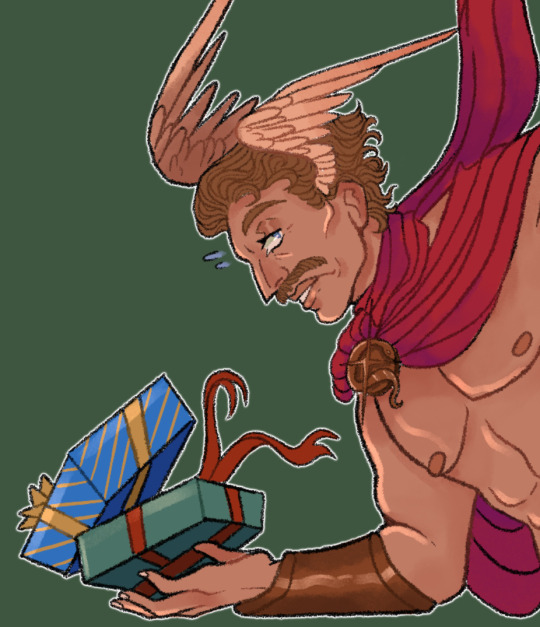

Happy Holidays 🎁🎄~ Hermes
#hermes#hermes greek god#hermes greek mythology#greek myths#greek mythology#christmas#happy holidays#mythology#hermes god#god of messengers
192 notes
·
View notes